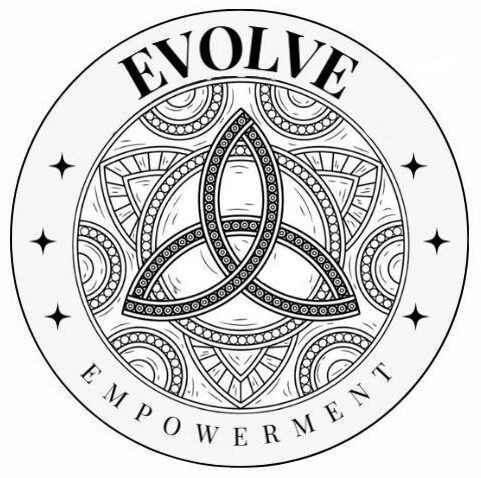You would agree with me that there is something sacred in the stillness before the world awakens – the quiet silence that precedes the noise, the sun warming the windowsill like a whispered promise. In this fragile threshold between dreams and duties we are given a choice: to rush blindly into the day or to enter it with intention.
The Science Behind a Mindful Morning Start
It’s not a vague wellness trend. Focus your attention on this: ”Science backs what monks and mystics have always known—how we begin our day shapes our neurochemistry, and thus, our choices. Morning mindfulness doesn’t just sound poetic—it regulates cortisol, the stress hormone, and sets a smoother rhythm for the rest of the day”.
Researchers at Harvard and the University of Wisconsin have documented the positive effects of mindfulness meditation on brain regions tied to attention, memory, and emotional regulation.
Even just ten minutes of morning breathing can reduce stress markers (Goyal et al., 2014). Intention-setting, a close cousin to goal-setting, goes one step further—it aligns your actions with your values. Think of it as drawing a compass before you set sail.
A day that begins with clarity tends to remain clear. When we wake up and immediately plunge into notifications, our minds become battlegrounds before breakfast. But when we begin with calm, we respond instead of react. We lead, instead of follow.
Creating a Serene Morning Environment
Your environment is your first cue. A cluttered room murmurs urgency. A peaceful space whispers safety. It’s not about perfection. It’s about presence.
Start with simplicity. Let your bedroom breathe. Let natural light in, if you can. Open a window. Add one plant.
Choose soft, warm lighting instead of stark fluorescents. Consider the role of sound—maybe the hum of a diffuser or the rustle of leaves outside your window.
Even color speaks. Pale blues, greens, and warm whites can gently signal your nervous system that it’s safe to relax.
We’re primal beings—we still respond to cues older than language. Incorporating nature, even subtly, can return us to ourselves before the day pulls us apart.

Essential Elements of a Mindful Morning Routine
No two people need the same rituals. But the elements remain consistent: attention, breath, movement, reflection.
Begin with a single breath. Feel it. That’s it. You’ve started.
Stretch gently. Light a candle. Whisper a word of gratitude, even if it’s just for the hot water or the silence.
Set an intention. Not a to-do. An intention. “I will be curious today,” or “I will act from love, not fear.”
Add a moment of stillness—perhaps five minutes of seated meditation, or simply watching the way light spills across the floor. This isn’t about productivity; it’s about reclaiming your agency before the chaos begins.
Nourishing Your Body and Mind with Intention
You can taste mindfulness, too. A warm cup of tea cradled in both hands. The first bite of something nourishing, not devoured in haste but honored like a ritual.
Mindful eating isn’t about restriction. It’s about presence. Eat something that fuels—not just your body—but your joy. Even a simple piece of fruit can become a small ceremony if you’re paying attention.
And don’t forget movement. Not punishment. Movement. Stretching, walking, dancing barefoot to your favorite song. That’s enough.
If you have the space for it, write. A line, a paragraph, a page. It doesn’t need to be profound. Just true. Reading something reflective also helps shape the narrative of your day.
You can read this article if you want more information about ”the present moment”
Consistency: The Key to Transformative Mornings
Here’s where it all collapses or takes root: consistency. The brain loves patterns. When we repeat something daily, we carve neural pathways like rivers etching stone. It becomes easier. Familiar. Eventually, it becomes who you are.
The psychology of habit formation (see Duhigg’s “Habit Loop”) teaches us that routines require cues and rewards. Your cue might be the kettle boiling. Your reward could be the peace you feel afterward.
But let’s be honest: distractions will come. Your phone will tempt you. Sleep will seduce you. That’s normal. The trick isn’t to be perfect—it’s to return.
Digital detoxing is essential here. At least for the first half-hour, keep screens away. Let your consciousness be your own for a while.
And if you’re looking for support in reshaping your mornings—and maybe your life—you might consider learning how to turn your passion into something bigger.
Platforms like Wealthy Affiliate can help you build a mindful business that aligns with your values. Or if you’re curious about more holistic self-improvement approaches, this Personal Growth Program might just be the nudge your mornings need.
Many have walked this path—some hesitant, some desperate, some hopeful. And many, over weeks or months, found their mornings transformed, their anxiety reduced, their clarity sharpened. They didn’t become saints. They became themselves.

Come Home to the Morning
You don’t need to escape to a monastery. You don’t need incense or mantras or a sunrise beach.
You only need to choose—each morning—how you will enter the day.
The world will rush. It always does. But you can still walk. You can still breathe. You can still begin with intention.
And that… changes everything.
FAQ: Mindful Mornings
What is a mindful morning?
A mindful morning is a way of starting your day with awareness, presence, and deliberate intention rather than rushing through autopilot routines.
How long should a mindful morning routine be?
Even 10–15 minutes can make a difference. It’s not about duration but about quality and consistency.
Can I be mindful if I’m not a morning person?
Absolutely. Mindfulness isn’t about the clock—it’s about how you meet your day, even if it starts at 10 a.m.
What are some quick ways to be more mindful in the morning?
Breathe deeply before getting out of bed, avoid screens for 30 minutes, and take a moment to set a simple intention.
Do I need to meditate to have a mindful morning?
No. Meditation helps, but it’s not essential. Mindfulness can be found in stretching, drinking tea, or simply watching the sunrise.
Bibliography
- Goyal, M. et al. (2014). “Meditation Programs for Psychological Stress and Well-being: A Systematic Review and Meta-analysis.” JAMA Internal Medicine.
- Duhigg, C. (2012). The Power of Habit: Why We Do What We Do in Life and Business.
- Kabat-Zinn, J. (1994). Wherever You Go, There You Are: Mindfulness Meditation in Everyday Life.
- Davidson, R.J. et al. (2003). “Alterations in Brain and Immune Function Produced by Mindfulness Meditation.” Psychosomatic Medicine.
Disclosure: This article may contain affiliate links. If you click on these links and make a purchase, I may earn a commission at no extra cost to you.


I’ve been reading this blog post and agree. Mindfulness is maintaining a nonjudgmental state of heightened awareness of one’s thoughts, emotions, and experiences in the present moment. It involves being fully present and aware of where and what you are doing, without becoming overly reactive or overwhelmed. Starting your day right is a great practice and helps put your mind and emotions in the right place early in the day. My morning tea ritual at the dining table and sipping the warm brew while watching birds at our feeders through the window starts my day off nicely. I may start incorporating your suggestion of lighting a candle, too. I love the flickering light of a candle. I usually have something at the table or on my Kindle to read while I sip my tea. There is a lot of peace in those few minutes in the morning, and a nice memory to start off the day. Thank you for this post, I like your blog site. Good job. – Shirley
Hi Shirley.
Your morning ritual sounds absolutely delightful—what a peaceful way to greet the day! There’s something so magical about that quiet moment with tea, birds, and a good read. Your description of mindfulness in action—being present without judgment—is spot-on, and it’s clear you’ve already created such a meaningful practice for yourself.
I’m honored you’d consider adding a candle to your routine—that flickering light really does add a touch of serenity, doesn’t it? Thank you for sharing your own wisdom and for the kind words about the blog. Wishing you many more mornings filled with warmth, stillness, and those little feathered visitors!
Mitia